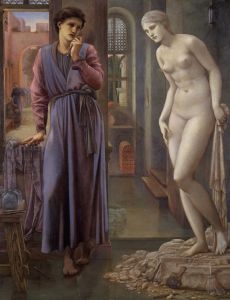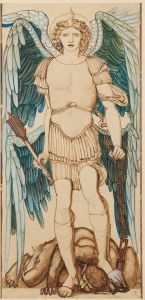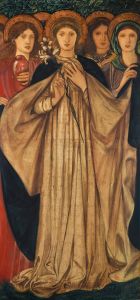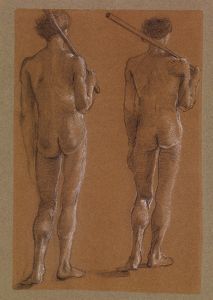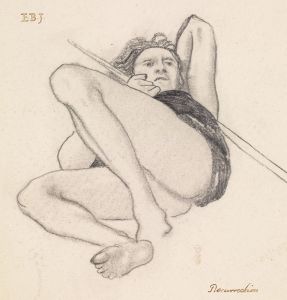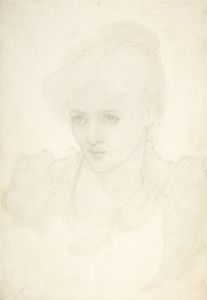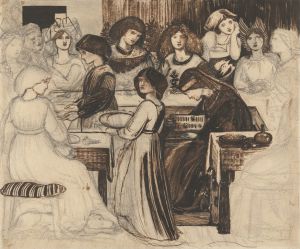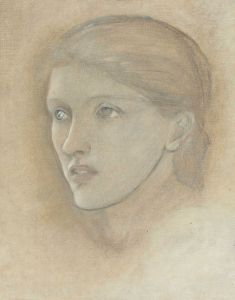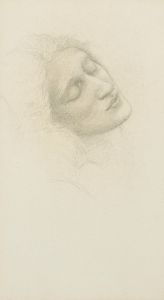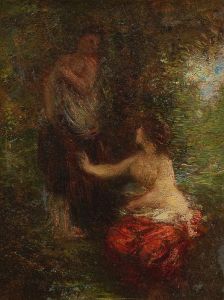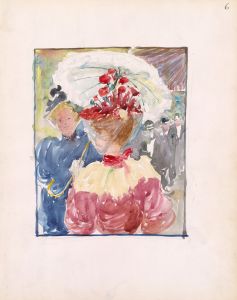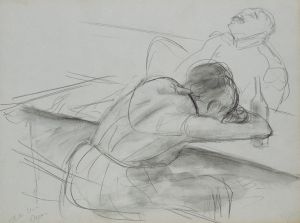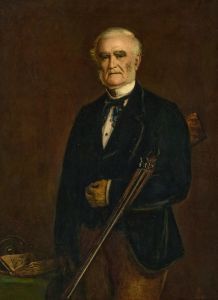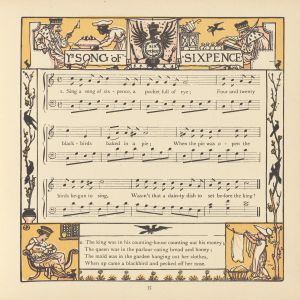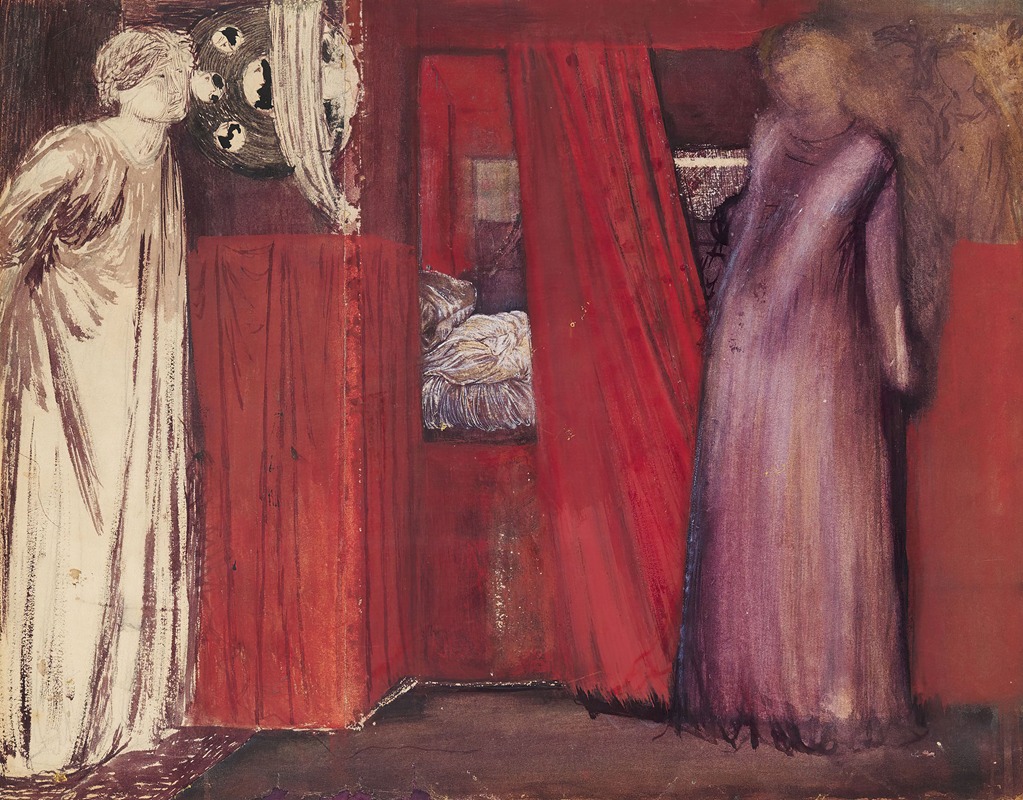
Fair Rosamund and Queen Eleanor
A hand-painted replica of Sir Edward Coley Burne-Jones’s masterpiece Fair Rosamund and Queen Eleanor, meticulously crafted by professional artists to capture the true essence of the original. Each piece is created with museum-quality canvas and rare mineral pigments, carefully painted by experienced artists with delicate brushstrokes and rich, layered colors to perfectly recreate the texture of the original artwork. Unlike machine-printed reproductions, this hand-painted version brings the painting to life, infused with the artist’s emotions and skill in every stroke. Whether for personal collection or home decoration, it instantly elevates the artistic atmosphere of any space.
"Fair Rosamund and Queen Eleanor" is a painting by the British artist Sir Edward Coley Burne-Jones, a prominent figure in the Pre-Raphaelite movement. The artwork, created in 1861, depicts a scene inspired by the legendary story of Rosamund Clifford, often referred to as "Fair Rosamund," and Queen Eleanor of Aquitaine. The legend, which has its roots in medieval English folklore, tells of Rosamund, the mistress of King Henry II, and her tragic encounter with his wife, Queen Eleanor.
In the painting, Burne-Jones portrays the dramatic moment when Queen Eleanor confronts Rosamund. The composition reflects the artist's characteristic style, with elongated figures, intricate detailing, and a focus on emotional intensity. The scene is set in a richly decorated interior, emphasizing the medieval atmosphere that Burne-Jones often sought to evoke in his works. The artist's use of muted, harmonious colors and delicate patterns is typical of his aesthetic, which was heavily influenced by the decorative arts and the revival of medieval themes.
The story of Rosamund and Eleanor, while popular in literature and art, is largely considered a legend rather than a historical fact. According to the tale, Rosamund was hidden away in a labyrinth by King Henry II to protect her from Queen Eleanor's jealousy. However, Eleanor is said to have discovered Rosamund and forced her to choose between death by poison or the dagger. Burne-Jones's painting captures the tension and drama of this legendary encounter, though it does not adhere to any specific historical account.
"Fair Rosamund and Queen Eleanor" is an early work by Burne-Jones, created during a period when he was deeply influenced by the ideals of the Pre-Raphaelite Brotherhood and the medievalism of his mentor, Dante Gabriel Rossetti. The painting reflects Burne-Jones's interest in storytelling through art, as well as his fascination with themes of love, betrayal, and tragedy.
The painting is currently housed in a private collection, and its public exhibitions have been limited. As a result, it is less well-known compared to some of Burne-Jones's later works, such as "The Golden Stairs" or "The Beguiling of Merlin." However, it remains an important example of his early exploration of medieval themes and his development as an artist within the Pre-Raphaelite tradition.





